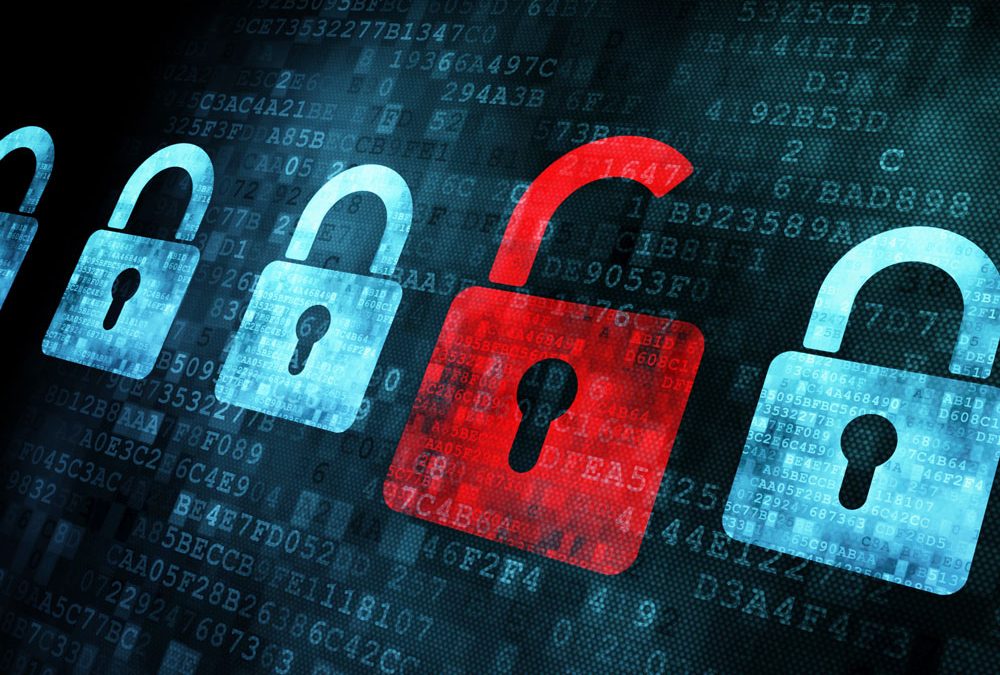
Mar 13, 2018 | SMB Technology, SMB Technology, SMB Technology, SMB Technology, Technology News
A network is only as strong as its weakest link, and if that weakest link is your security, that can compromise the revenue and the reputation of your business. Attacks just from ransomware have increased over the years, by 200% between 2015 and 2016 alone. There are three fronts to consider: identify the hazards, use technical tools to protect your network, and educate your employees on cybersecurity. Read on to find out more about how to protect yourself. Know the Hazards of Malware and Phishing Schemes With so many businesses finding it necessary to gather, store and monetize customer data, this is an area of vulnerability. Malicious software, or “malware,” can take various forms, from worms and viruses to ransomware, which can hold your data hostage. Some types can simply make your system run more slowly, and some can steal or destroy data. Phishing schemes are designed to steal private data simply by an unwary recipient clicking a link. Technical tools are part of the protection plan. Fight Cyber Attacks with Technology There are plenty of technical tools and applications to keep your system safe. Firewalls and SPAM filters can keep unwanted network communications from coming in and going out. Anti-virus and anti-malware applications keep harmful worms, viruses and other malicious software from infiltrating your network. Be sure also to keep your antivirus and anti-malware programs up-to-date, to guard against the latest threats. Network monitoring can help stop attacks before they start, and operating system patches can fill in any security holes in the network. Along with these tools, be sure to train your employees to recognize security hazards....

Dec 7, 2017 | SMB Technology, SMB Technology, SMB Technology, SMB Technology, Technology News
Businesses today are under constant attack from Cyber Criminals. Ransomware, including the WannaCry Virus , is an example of a top threat to avoid. With the risk of lost data, lost productivity and lost reputation, isn’t it time to close the door on Cyber Crime? Here are a few tips to defend your company from potential cyber attacks. Document Operating System Security Patch Policies and Procedures Take the time to review and update your documented security policies and procedures. Security and related patch policy should identify who is responsible for application and operation of system patches and system updates. Clearly determine whose responsibility it is to apply the latest operating system and related security patches. Whether this process is manual, or done automatically through a managed service, be sure your employees know which is the case. Also, document your policies to verify all your systems are in compliance. Review your Cybersecurity Framework Avoid data breaches resulting from lack of Cybersecurity defence. Ensure your AntiVirus and Malware detection definitions are up to date. Utilize spam filtering and other Cyber Threat detection to protect your business. Consider penetration testing to identify any weaknesses on your network. Also ensure your employees are periodically trained to identify and avoid malware and phishing schemes. If you have suffered a data loss due to Cyber attack, ensure you have a communications plan to notify all stakeholders and authorities within adequate time frames. Having a solid data protection plan including Cloud Backup can minimize your exposure and increase your recovery time. Study Machine Learning to Combat Cyber Threat Cybercriminals are using automation, artificial intelligence and machine...

Nov 7, 2017 | SMB Technology, SMB Technology, SMB Technology, SMB Technology, Technology News
According to technology research firm Gartner Group, technology spending is expected to grow to $3.7 Trillion dollars in 2018. Communications Services ($1.387 billion) and IT Services ($931 billion) make up the majority of spending. In contrast, Enterprise Software and Data Center Systems are the smallest categories of spending expected for next year. Shifts in IT spending from Data Centric to Cloud Computing change the landscape for buyers, vendors and technology solution providers alike. Here are top Technology Trends you will hear about in 2018. Cybersecurity 2017 was a year full of data breaches and ransomware. According to a 2017 Cost of Data Breach Study by the Ponemon institute, the average cost of a data breach in 2017 was $141 per record lost. Consider how many customer, prospect, employee, member or supplier records you may have within your organization. With the risks so high, expect Cybersecurity to be top of the list of Technology Trends for most companies next year. Cloud Computing According to Forbes, 80% of IT budgets will be committed to the Cloud. Software as a Service (SaaS) solutions will help line-of-business managers from Sales, Marketing, HR and Finance become more productive. Communications and Collaboration applications including Email, VoIP and Web conferencing solutions will connect employees across companies and supply chains. Infrastructure as a Service (IaaS) will host a range of solutions including websites, online backup and more. The utility model, or paying for usage, appeals to businesses replacing technology capital expense (CapEx) for subscription-based operating expense. Managed Services As the “everything as a service” model gains in popularity, more companies will adopt fixed- priced managed services contracts....
May 4, 2017 | SMB Technology, SMB Technology, SMB Technology, Technology News
Ransomware, spyware, phishing schemes, and other Cyber attacks are commonplace in today’s world of technology. According to a recent article in Forbes, ransomware attacks grew at an accelerated pace in 2016 with reports of 638 million attacks, almost 200 times more than the number of ransomware attacks in 2015. Most experts agree that Ransomware attacks will continue to occur–so what can you do to avoid being a ransomware hostage? Not All Ransomware is Created Equal Before you panic, find out what type of Ransomware you are up against. Scareware is a type of Ransomware that tricks you into thinking you have a bigger problem. A simple scan may quickly remove the pop from your browser cache and get you back on your way. Some ransomware is truly nasty — your entire system may be encrypted, meaning you will need to wipe your system and start over if you have a good backup. Otherwise, you may find yourself hostage to the cybercriminals to unlock your data. An Ounce of Protection is Worth a Pound of Ransom Data protection is an important element in minimizing the impact of Ransomware. Make sure your network security is fully compliant. Backup your data, update your antivirus definitions and make sure your security patches are up to date. Consider using Cloud Backup, Security as a Service, and Managed IT services to keep your network up to date. Having a strong offense to avoid ransomware is your best defense. Don’t Forget the Human Element Train your employees on a regular basis on the importance of staying vigilant against Cyberattacks and how to avoid being a hostage....
Jan 12, 2017 | SMB Technology, Technology News
Defending against Cyber threats is no easy task. Understanding the risks and designing a defense strategy are important steps in protecting yourself from Malicious actors and Cybercriminals. Staying current on Operating System and Application Patches, Restricting Network Access, and maintaining antivirus and malware protection are known ways to protect your network. Employee awareness and education on how to identify threats, and the importance of adhering to policies, also bolster your defense against cyber attack. If you’re not convinced, review the following Cyber threats you need to protect against. How Malicious Software (Malware) Works Malware is self-propagating software designed to infiltrate your network. This software can come in the form of a worm that will infect your network via your router via your Internet Protocol (IP) address. If it doesn’t find a hole in your network it may automatically update to scan for the next sequential IP Address, infiltrating and corrupting networks as it goes along. Avoid Malware by proactively scanning your network and keeping your network in compliance. Why Phishing Could Put You Out of Business Every year, millions of SPAM emails are sent to unwary recipients with the hope of collecting private and personal information including, account/password, privacy data and other information that can be exploited for profit. What’s more, Phishing is a popular way for Cybercriminals to distribute Ransomware, a form of malware that holds your systems hostage in exchange for payment. In the event of a data breach, your company may need to disclose the impact to customers and other stakeholders. In addition to ransom and legal fees, your company’s reputation may be on...




